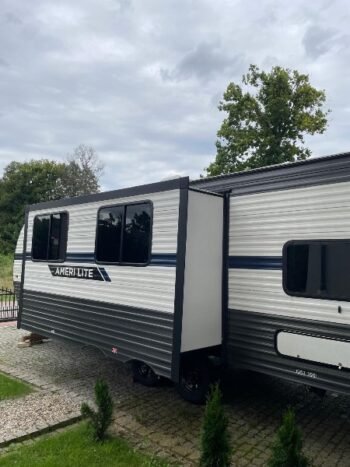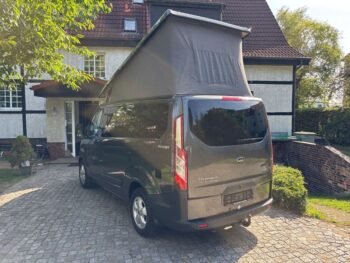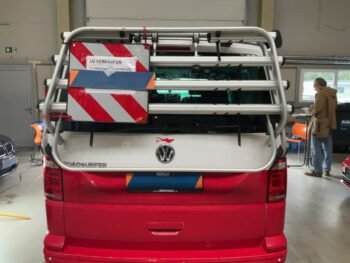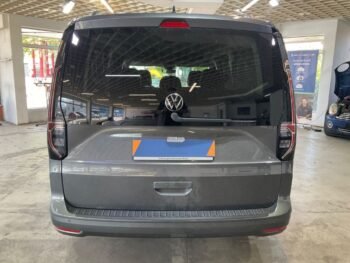Roof tents are becoming increasingly popular for camping enthusiasts. They offer a unique way to experience the outdoors while providing comfort and convenience.
Understanding the different types of roof tents and their advantages is essential for making an informed choice. This guide will cover essential aspects, from installation to maintenance, helping users maximize their camping experience.

Understanding Roof Tents
Roof tents have transformed the camping experience, integrating convenience with mobility. This section delves into what roof tents are, their origins, and how they compare to traditional ground tents, shedding light on their rising popularity among outdoor enthusiasts.
What is a Roof Tent?
A roof tent is a camping unit that is mounted on the roof rack of a vehicle. These tents provide an elevated sleeping space, allowing campers to escape the elements on the ground. Constructed from durable materials, roof tents are designed for quick setup and takedown, making them suitable for spontaneous adventures.
Most roof tents are equipped with an internal mattress and features like windows, ventilation, and rainfly to enhance the camping experience. They offer not only comfort but also a unique view of the surroundings from a higher vantage point.
History of Roof Tents
The concept of elevated sleeping solutions dates back several decades, but roof tents gained notable traction in the late 20th century as off-road and camping cultures evolved. The innovation began primarily with overlanding enthusiasts who needed a practical way to camp in various terrains.
With technological advancements, materials became lighter yet stronger, allowing for more intricate designs and better weather resistance. Roof tents have since evolved into a significant segment of the camping market, appealing to both casual campers and adventure seekers.
Roof Tent vs. Ground Tent
Comparing roof tents to traditional ground tents reveals a distinct difference in functionality and user experience. Below are some key aspects that highlight their differences:
- Height and Safety: Roof tents elevate campers above ground hazards such as insects, mud, and uneven terrain, providing a safer and cleaner sleeping environment.
- Setup Time: Roof tents generally require less time to set up than ground tents, which often necessitate more complex assembly involving poles and stakes.
- Weather Resistance: Roof tents typically offer better protection against bad weather, as they are elevated and often designed with superior fabric technologies to resist rain and wind.
- Mobility: Roof tents facilitate travel to different locations without the need to portage an entire camping setup, allowing for spontaneous exploration.
While ground tents remain a staple for many campers, the advantages of roof tents have led to a growing interest in their use, particularly among those who value convenience and quick deployment.
Types of Roof Tents
Roof tents come in various styles, each providing unique features and benefits for outdoor enthusiasts. Understanding the differences between these types helps in selecting the right one for individual needs.
Hard Shell Roof Tents
Hard shell roof tents are known for their sturdy design and quick setup time. These tents feature a rigid exterior that provides excellent durability and protection against the elements.
Benefits of Hard Shell
- Enhanced Durability: Hard shell tents are typically constructed with robust materials that withstand harsh weather conditions.
- Quick Setup: They are often designed for easy deployment, allowing users to set up camp in minutes.
- Improved Aerodynamics: The sleek profile of hard shell tents minimizes wind resistance during travel.
- Better Insulation: The rigid structure provides better insulation compared to soft shell options, keeping campers comfortable in varied temperatures.
Popular Hard Shell Models
- Wasatch Hardshell Tent: This model is praised for its compact design and rapid setup capabilities, making it ideal for weekend warriors.
- iKamper Skycamp: A luxury option featuring a spacious interior and high-quality materials, perfect for families or those looking for a comfortable experience.
- Roofnest Sparrow: Known for its lightweight construction and compatibility with a range of vehicles, this tent is a favorite among those seeking versatility.
Soft Shell Roof Tents
Soft shell roof tents offer a different approach to camping, focusing on lightweight materials and compact storage. These tents are typically made from fabric that can be easily packed away when not in use.
Advantages of Soft Shell
- Lightweight: Soft shell tents are generally lighter than their hard shell counterparts, making them easier to transport.
- Compact Storage: They can be folded down to a smaller size, which is beneficial for those with limited roof space.
- Cost-Effective: Soft shell models are often more affordable, making them a great entry point for new campers.
- Flexibility in Space: Many soft shell tents offer expandable features such as awnings or annexes to enhance livable space.
Leading Soft Shell Brands
- Tepui: Renowned for their rugged designs, Tepui tents are built to withstand all types of outdoor adventures.
- Thule: This brand combines functionality with style, offering several models that cater to both casual and serious campers.
- Yakima: Known for versatile and practical designs, Yakima provides a range of soft shell options suited for various vehicle types.
Hybrid Roof Tents
Hybrid roof tents merge the features of both hard and soft shell designs, offering a unique camping solution. These models typically have a hard shell base for durability and a soft shell top for added comfort.
They provide a balance between the quick setup of hard shells and the lightweight advantage of soft shells. Hybrid tents appeal to a broad range of campers, as they adapt well to various conditions and preferences.
Choosing the Right Roof Tent
Finding the most suitable roof tent involves several essential considerations. The right choice ensures a comfortable and enjoyable camping experience.
Factors to Consider
When selecting a roof tent, various factors play a crucial role in ensuring the product meets specific needs and preferences. Here are some key aspects to keep in mind:
- Intended Use: Determine whether the roof tent will be used for weekend trips or longer adventures. Frequent travelers may prioritize durability and ease of setup.
- Climate Conditions: Consider the weather in your usual camping destinations. Some tents are better suited for rain or cold temperatures, while others excel in warm conditions.
- Setup Time: Look for models with fast and easy setup features. This can significantly enhance the camping experience, especially for spontaneous getaways.
- Budget: Roof tents come in various price ranges. Establish a budget that balances quality and affordability to find the best options.
Vehicle Compatibility
Ensuring that a roof tent is compatible with the vehicle is essential. Not all vehicles can support every roof tent type, and the following aspects should be considered:
- Weight Capacity: Check the vehicle’s roof weight limit. This will dictate the maximum tent weight allowed without compromising safety.
- Roof Rack System: Some vehicles may require additional roof racks or crossbars to accommodate a roof tent. Confirm that these are compatible with the tent you select.
- Vehicle Dimensions: Larger vehicles offer more flexibility with tent size. Ensure the tent fits well on the roof without overhanging or obstructing any vehicle features.
Capacity and Size Options
Roof tents are available in various sizes, accommodating different numbers of people. This makes it crucial to evaluate the size and capacity requirements for the intended use.
- Sleeping Capacity: Roof tents can typically sleep from one to four people. Assess how many individuals need accommodation, including any pets that may join.
- Available Space: It’s important to consider the interior space of the tent, especially for taller campers. A roomy tent enhances comfort during the night.
- Compactness: If space is limited during travel, opt for a compact design that can be easily stored when not in use. A lighter option can also impact fuel efficiency.
Installation and Setup
Installing and setting up a roof tent effectively can greatly enhance the camping experience. This section provides an overview of the installation process along with useful setup tips to ensure a smooth experience.
Installation Guide
Proper installation is crucial for maximizing the roof tent’s functionality and ensuring safety. Follow these guidelines to install your roof tent correctly.
Basic Tools Required
- Socket Wrench Set: Essential for tightening bolts and securing the tent to the vehicle.
- Torque Wrench: Ensures that the bolts are tightened to the manufacturer’s specifications.
- Drill and Drill Bits: If applicable, a drill may be needed for adding mounting brackets.
- Measuring Tape: Useful for precise measurements to ensure a proper fit.
- Level: Helps confirm that the roof tent is balanced during installation.
Common Installation Mistakes
Mistakes made during installation can lead to issues down the line. Here are some pitfalls to avoid:
- Neglecting Vehicle Compatibility: Always check compatibility with your specific vehicle model.
- Improper Torque: Failing to use a torque wrench can result in loose fixtures.
- Ignoring Instructions: Skipping steps or misinterpreting instructions can lead to improper setup.
- Overloading: Not considering the weight limit specified by the manufacturer.
Setup Instructions
Once the roof tent is securely installed, the next step is the setup process. Understanding how to set up the tent properly can improve comfort and safety when camping.
Easy Setup Tips
- Prepare Ahead: Familiarize yourself with the setup process at home before your trip.
- Have a Partner: Having someone assist with lifting can make the setup easier.
- Use a Ground Mat: Placing a mat underneath can help with cleanliness when entering and exiting the tent.
- Consult the Manual: Always refer to the owner’s manual for specific instructions tailored to your model.
Ensuring Stability and Safety
Stability and safety are paramount. Implement the following measures to secure the roof tent properly:
- Double-Check All Fasteners: After setup, ensure all screws and bolts are tight.
- Even Weight Distribution: Distribute gear and weight evenly to prevent tipping.
- Utilize Guy Lines: If applicable, use guy lines to provide extra stability against wind.
- Periodic Checks: Make it a habit to check the tent’s stability throughout your stay.
Roof Tent Accessories
Roof tent accessories are essential for enhancing comfort, functionality, and enjoyment during camping trips. From must-have gear to optional upgrades, the right accessories can significantly improve the overall experience.
Essential Accessories
When setting up a roof tent, certain accessories can make all the difference. These essentials help ensure a comfortable and organized camping experience.
- Storage Solutions: Invest in storage bags or bins to keep gear organized and easily accessible. Proper storage prevents clutter inside the tent.
- Entry Mat: A durable entry mat keeps dirt and debris from entering the tent. It also provides a clean area for changing shoes.
- Ladder Extensions: Some roof tent models have adjustable ladders. Ladder extensions add extra height for easier access. This is especially useful for taller vehicles.
- Bug Screens: Screens provide ventilation while keeping insects out. They are great for enjoying cool breezes without unwelcome guests.
- Lighting Solutions: Compact LED lights or solar-powered lanterns create a cozy atmosphere inside the tent at night. Motion-sensor lights can enhance safety.
Awnings and Annexes
Awnings and annexes expand usable space and provide excellent shelter from the elements. These additions can enhance overall camping comfort.
- Awnings: These attach to the roof tent and create a shaded area outside. They are perfect for cooking, dining, or relaxing during sunny days.
- Annex Tents: Annexes offer additional sleeping space or a changing area. They are especially useful for families or larger groups needing extra room.
- Side Walls: Many awnings come with optional side walls for added wind protection or privacy. These are ideal for creating a more enclosed feeling.
Replacement Parts and Upgrades
Maintaining a roof tent may require occasional replacement parts or upgrades. Investing in quality components can extend life and improve performance.
- Replacement Canvas: The fabric of the tent can wear over time. Replacement canvas allows for continued use without needing a whole new tent.
- Zippers and Seals: Zippers can become damaged or stuck. Replacing them ensures proper function and weather sealing.
- Insulation Kits: Upgrade insulation for colder climates. These kits improve temperature regulation and comfort during chilly nights.
- Roof Rack Pads: Protect the vehicle and tent during transportation with quality pads. They prevent scratches and damage from the elements.
- Upgrade Accessories: Investing in solar panels or portable battery packs can enhance the camping experience by providing power for devices
Advantages of Using a Roof Tent
Roof tents offer numerous benefits, making them an ideal choice for outdoor enthusiasts. Their design and features enhance the overall camping experience, providing comfort, safety, and convenience.
Comfort and Convenience
The elevated design of roof tents ensures a more comfortable camping experience. Campers can enjoy a good night’s sleep above the ground, away from moisture, insects, and uneven terrain. This elevation adds an extra layer of insulation, helping to keep warm during colder nights.
- Enhanced Comfort: Many models come equipped with built-in foam mattresses that maximize comfort and support.
- Simple Setup: Roof tents are designed for quick and straightforward assembly. Most can be set up in under 5 minutes, ideal for spontaneous adventures.
- Easy Access: Once the tent is mounted on the roof, it is easily accessible without the need to navigate through mud or debris on the ground.
Weather Protection and Durability
Roof tents are built to withstand various weather conditions, offering protection against the elements. The solid structure and quality materials help ensure durability and longevity.
- Strong Construction: Most roof tents feature robust materials that resist tearing and water exposure, ensuring dryness and safety during rain.
- Wind Resistance: An elevated structure reduces wind impact, providing a stable shelter even in adverse weather conditions.
- Temperature Regulation: Being off the ground keeps users insulated from the cold ground, which can significantly lower nighttime temperatures.
Adventure-Ready Features
These tents are specifically designed with adventure seekers in mind, incorporating various features that enhance outdoor activities.
- Versatile Compatibility: Roof tents can be mounted on various vehicles, from SUVs to trucks, allowing for flexibility in travel.
- Compact Design: When packed, roof tents are streamlined and take minimal space, leaving more room for additional gear.
- Integrated Storage Solutions: Many models offer built-in storage areas for gear and personal items, keeping everything organized and accessible during the trip.
Roof Tent Maintenance
Proper maintenance of roof tents is essential for ensuring longevity and optimal performance. Regular cleaning and thoughtful storage can significantly enhance the lifespan of these outdoor essentials.
Cleaning and Care Guidelines
Maintaining a clean roof tent is crucial to preserving its materials and functionality. Regular cleaning helps prevent mildew, mold, and odors that may accumulate from extended use.
- Regular Inspection: Conduct regular checks for any signs of wear, tears, or damage. Addressing these issues promptly can prevent larger problems in the future.
- Cleaning Fabric: Use a mild detergent mixed with water and a soft brush to clean the tent fabric. Avoid harsh chemicals, as they can damage the material.
- Wind Protection: After external use, check for dirt and debris that may have accumulated during windy conditions. Gently brush off or shake out any loose particles.
- Mold and Mildew Prevention: Ensure the tent is completely dry before storing it to prevent mold and mildew growth. If needed, use a mixture of water and vinegar to tackle stubborn spots.
- Cleaning Zippers: Zippers can collect dirt and sand. Clean them using a damp cloth and apply a lubricant designed for zippers to keep them functioning smoothly.
Storage Tips for Longevity
When the roof tent is not in use, proper storage plays a pivotal role in maintaining its quality and functionality.
- Dry and Cool Location: Store the tent in a dry place away from direct sunlight. Excessive heat and moisture can deteriorate the materials over time.
- Use a Storage Bag: If the tent comes with a storage bag, use it to keep the tent protected from dust and other contaminants. If not, consider investing in a breathable storage bag.
- Avoid Compression: Do not compress the roof tent tightly for extended periods, as this can lead to creases and damage in the fabric.
- Seasonal Checks: Before the camping season begins, inspect the tent for any signs of damage or issues that may have arisen during storage.
- Store Accessories Separately: Keep accessories, like poles and stakes, stored separately to prevent any potential scratching or damage to the tent material.
Popular Roof Tent Brands
In the growing market of roof tents, several brands have established themselves as leaders by offering innovative designs, durability, and comfort. Below are a few notable brands that stand out in today’s camping community.
Roofnest
Roofnest is known for its user-friendly, high-quality roof tents that cater to a range of outdoor enthusiasts. Their products emphasize ease of setup and versatility, making them a popular choice among adventurers.
Notable Series and Models
- Meadowlark: This model is designed for quick set-up and features a hydrophobic fabric, ensuring a dry night even in wet conditions.
- Sparrow: A lightweight option ideal for smaller vehicles or for those who prefer minimalism without compromising comfort.
- Condor: Offers ample space and rugged durability, perfect for families or groups looking for a comfortable camping experience.
- Falcon: This model combines sleek design with practical features, making it suitable for both weekend getaways and longer road trips.
iKamper
iKamper has quickly gained recognition for its premium roof tents that blend modern technology with outdoor functionality. Their products often feature cutting-edge materials and thoughtful details.
Innovative Features
- Skycamp: Known for its ability to sleep up to four people comfortably, this model boasts a unique pop-up setup that takes mere minutes.
- Expandable Design: Many iKamper models can expand to offer additional sleeping space, catering to larger groups.
- Interchangeable Accessories: iKamper allows users to customize their tents with various accessories, enhancing comfort and usability.
Tepui
Tepui is renowned for its strong emphasis on adventure and exploration. Their tents are built to withstand harsh outdoor conditions while still providing a cozy shelter.
Durability and Design
- High-Quality Materials: Tepui tents are constructed from durable fabrics designed to resist tearing and wear, ensuring longevity even in the toughest environments.
- Weather Resistance: Many models feature watertight seals and extra ventilation, prepared for both rainstorms and sunny days.
- Variety of Models: Tepui offers a range of options, including models suitable for extreme temperatures and elevations, catering to the most adventurous users.
Outdoor Cooking with Roof Tents
Cooking outdoors becomes an enjoyable adventure when utilizing roof tents. These setups allow campers to prepare meals comfortably while surrounded by nature. Having the right kitchen equipment and setup can enhance the outdoor cooking experience significantly.
Portable Kitchen Setups
Creating an efficient portable kitchen is essential for making outdoor cooking easy and enjoyable. There are various ways to set up a cooking space on the go. A few popular configurations include:
-
Compact Camp Stoves
These versatile stoves are designed for portability and are typically lightweight. They can run on propane or butane, making them easy to use. Many models come with features like foldable legs and integrated windshields for better cooking conditions.
-
Foldable Tables
Having a designated space for food preparation is critical. Foldable tables are perfect for camping as they are lightweight and easy to set up. They provide ample space for cooking, prepping, and even dining.
-
Mobile Food Storage
Utilizing portable coolers and storage bins is vital for keeping perishable items fresh. Specialized storage solutions help organize food supplies and keep everything accessible during trips.
-
Outdoor Cooking Gear
Using gear designed for outdoor cooking, such as lightweight cookware and grilling tools, enhances the experience. Many sets include nesting pots, pans, and utensils that make cooking and cleanup a breeze.
Best Cooking Gear for Camping
Selecting the right cooking gear can make a world of difference when preparing meals outdoors. The following items are essential for anyone cooking in a roof tent:
-
Multi-functional Cookware
Opt for cook sets that can serve multiple purposes, such as pots that double as storage containers. These versatile options save space and reduce weight.
-
Portable Grills
Grilling adds flavor to meals. Compact portable grills allow campers to prepare everything from burgers to vegetables with ease. Many of these grills are designed for minimal fuel consumption.
-
High-Quality Utensils
Durable and lightweight utensils, such as tongs, spatulas, and knives, are important for efficient cooking. Choosing non-stick options can also simplify the cleaning process.
-
Water Supply System
Having easy access to clean water is crucial for cooking and cleaning. Consider investing in a portable water system that can be filled and used for various cooking tasks throughout the trip.
-
Camping Coffee Makers
For coffee enthusiasts, a portable coffee maker is a must-have. Options range from simple French presses to more complex espresso machines that work well in the great outdoors.
Essential camping gear significantly enhances the outdoor experience, providing comfort, convenience, and safety during adventures. This section covers critical items necessary for a successful camping trip.
Essential Camping Gear
Sleep Systems and Bedding
A comfortable sleep system is vital for a good night’s rest while camping. It involves more than just a sleeping bag; it includes various components designed to keep campers warm, protected, and comfortable throughout the night.
-
-
Sleeping Bags
-
Sleeping bags come in a variety of shapes, sizes, and temperature ratings. It is essential to choose a sleeping bag that matches the expected weather conditions. Options include:
-
-
- Rectangular sleeping bags, which offer roominess and comfort.
- Mummy sleeping bags, designed for efficiency and thermal insulation.
- Season-specific rated sleeping bags that cater to temperatures ranging from summer heat to winter cold.
-
Sleeping Pads
-
Sleeping pads provide cushioning and insulation from the ground, ensuring better comfort and warmth. They are available in various types:
-
-
- Inflatable pads, which offer excellent comfort but require air inflation.
- Self-inflating pads, which combine ease of use with moderate cushioning.
- Closed-cell foam pads, lightweight and durable, making them a popular choice for high-energy campers.
-
Portable Hammocks
-
For those who prefer to sleep suspended between trees, portable hammocks offer a lightweight and comfortable alternative to traditional sleeping arrangements. They can be set up quickly and are perfect for short naps or full nights of sleep.
Outdoor Shower and Water Solutions
Maintaining cleanliness while camping enhances overall comfort and hygiene. Solution options range from portable showers to various methods for accessing clean water in the great outdoors.
-
-
Portable Showers
-
Portable camping showers are designed to provide a convenient way to wash off dirt and sweat. They come in several types:
-
-
- Camp shower bags that use solar heating to warm water for a refreshing rinse.
- Pressurized portable showers, offering consistent water flow and higher pressure for a better shower experience.
- Battery-operated or rechargeable shower units, which can deliver water on demand.
-
Water Storage Solutions
-
Having enough water for drinking and cooking is essential. Water storage containers come in various shapes and sizes, including:
-
-
- Collapsible water containers that save space when not in use.
- Durable hard-sided containers designed for rugged conditions.
- Water jugs with integrated spigots to ease pouring during meal prep.
-
Water Filtration Systems
-
Ensuring access to safe drinking water is crucial. Portable filtration systems help campers eliminate harmful bacteria and pathogens. Consider the following options:
-
- Straw-style filters that allow direct drinking from fresh water sources.
- Gravity-fed filters that purify larger amounts of water at once.
- Pump-style filters for on-the-go purification needs during hiking adventures.
Buying Guide and Tips
This section provides essential insights for selecting the right roof tent and tips for securing the best deals. Understanding your options can enhance the camping experience and ensure a comfortable setup for adventurous outings.
New vs. Used Roof Tents
When considering a roof tent, buyers typically weigh the benefits of new versus used options. Each choice has its merits and potential drawbacks.
- New Roof Tents:
- Warranty Benefits: Most new tents come with manufacturer warranties, offering peace of mind regarding defects and malfunctions.
- Latest Features: New models incorporate the latest technology and design enhancements, ensuring improved performance and durability.
- Customization Options: Buyers can select specific colors, sizes, and added features that suit personal preferences.
- Used Roof Tents:
- Cost-Effective: Used tents are often significantly cheaper than new ones, presenting a great option for budget-conscious campers.
- Potential for Quality: Many used tents are well-maintained and can provide excellent value if purchased from reputable sellers.
- Negotiation Opportunities: There may be more room to negotiate the price when purchasing used, allowing for better deals.
Finding the Best Deals
Securing the best deal on a roof tent involves research and consideration of various factors. Strategies for finding competitive prices are key to ensuring a satisfactory purchase.
- Comparison Shopping:
- Examine multiple retailers to compare prices and offerings.
- Look for seasonal sales or promotions that many outdoor retailers run throughout the year.
- Online Marketplaces:
- Platforms like eBay or Craigslist can provide a range of options, including used tents at reduced prices.
- Be sure to check seller ratings and reviews to ensure a reliable transaction.
- Outdoor Expos and Shows:
- Attending outdoor expos can offer opportunities for exclusive deals and promotions directly from manufacturers.
- Interacting with vendors can also provide insights into upcoming sales and new product releases.
- Newsletter Sign-Ups:
- Many brands and retailers send newsletters that offer exclusive deals or early access to sales for subscribers.
- Signing up can also keep interested buyers informed of new product arrivals and promotions.
How Roof Tents Enhance Camping Experience
Roof tents transform the traditional camping experience, offering unique advantages that cater to various types of campers. They provide ease and comfort while encouraging outdoor adventures with family and friends.
Family Camping Made Easy
Camping with family can often be a complicated affair, but using a roof tent simplifies the process significantly. Families appreciate the convenience of elevated sleeping arrangements. Being off the ground keeps everyone safe from insects and moisture.
Several factors make roof tents attractive for family camping:
- Quick Setup: Setting up a roof tent is typically fast, allowing families to focus on enjoying their time together rather than wrestling with tent poles.
- Comfortable Sleeping: Roof tents are often designed with integrated mattresses or the capacity to add custom bedding, guaranteeing a restful night’s sleep for family members of all ages.
- Increased Security: An elevated design helps ensure that children are safer from potential ground-level hazards, providing parents peace of mind.
- Flexible Space: Many roof tents can accommodate multiple occupants, making it easy for families to share a single unit, which adds to the bonding experience.
Children especially enjoy climbing up to their sleeping space. The elevated position of a roof tent offers a unique vantage point for stargazing or simply enjoying nature, making it a memorable adventure.
Solo Adventures and Flexibility
For solo adventurers, roof tents provide unmatched flexibility, allowing individuals to explore off-the-beaten-path locations with ease. A roof tent enables spontaneous trips without the hassle of extensive packing and setup associated with traditional camping.
The advantages for solo campers include:
- Easy Transportation: Roof tents are generally compatible with a wide range of vehicles, making them accessible for those who travel alone without the need for large trailers or additional gear.
- Quick Departure: An easy setup allows for quick departures, meaning solo campers can hit the road at a moment’s notice, taking advantage of favorable weather or last-minute plans.
- Independence: Solo camping promotes self-sufficiency and encourages personal growth, as adventurers navigate camping without relying on others.
- Cozy Living Space: Roof tents provide a secure, personal space where individuals can enjoy solitude, read, or reflect amidst the beautiful wilderness.
Furthermore, the combination of comfort and simplicity offered by roof tents enhances the overall outdoor experience, enabling solo campers to focus on their adventure without distractions.
Common FAQs
Roof tents present a variety of unique features, and as interest grows, many common questions arise. This section addresses some of the most frequently asked questions to provide clarity and enhance the camping experience.
Addressing Top Questions
-
What is the weight limit for roof tents?
The weight limit for roof tents varies by model. Most manufacturers specify a maximum weight capacity, typically ranging from 400 to 800 pounds, including the occupants and gear. It is crucial to adhere to these guidelines to ensure safety and stability while camping.
-
Can roof tents be used in winter?
Many roof tents are designed to withstand cold conditions. Models that feature insulated materials and robust weatherproofing can provide a cozy camping experience in winter. It’s advisable to choose a tent with a rainfly and good ventilation to handle condensation buildup.
-
How do roof tents handle windy conditions?
Roof tents are generally built to endure windy conditions, especially hard shell models. They are more aerodynamic and stable than ground tents. It is essential to set up the tent securely, utilizing guy lines and stakes if necessary, to minimize movement in strong winds.
-
How do I clean my roof tent?
Cleansing a roof tent involves a few simple steps. Begin by brushing off loose dirt and debris, followed by spot cleaning with mild soap and warm water. Always ensure the tent dries completely before folding it up to prevent mold and mildew growth.
Troubleshooting Common Issues
-
What should I do if my tent leaks?
If a roof tent is leaking, first check the seams and zippers for any signs of damage. Applying seam sealer or waterproofing spray can help restore integrity. If the issue persists, it may be necessary to contact the manufacturer for further assistance.
-
What if the mattress is uncomfortable?
If the mattress included with the roof tent does not provide adequate comfort, consider investing in an inflatable mattress or sleeping pad. Many campers also use specialized camping mattresses designed to fit roof tents, which can enhance sleep quality.
-
How can I improve airflow inside the tent?
To improve airflow, ensure that vent windows are opened when camping. Some tents also include built-in fans or solar-powered ventilation systems. Adding a battery-operated fan can also aid in promoting air circulation, especially during hot weather.
-
Why is my roof tent difficult to set up?
Difficulty in setting up may result from improper handling or unfamiliarity with the mechanism. Reviewing the instruction manual or watching setup videos can be beneficial. Additionally, practicing the setup process at home prior to a trip ensures proficiency when on-site.
Future Trends in Roof Tents
As the outdoor adventure market continues to grow, innovations in roof tent technology and design are emerging to meet the evolving needs of campers and travelers. These advancements are set to enhance comfort, usability, and overall experience in outdoor camping.
Innovations and Technology
Recent years have seen significant strides in the technology used in roof tents. Manufacturers are focusing on materials that are not only lightweight but also resistant to extreme weather conditions. New fabrics are being developed that provide better insulation while also being waterproof, ensuring campers remain comfortable regardless of the environment.
Furthermore, automatic deployment systems are becoming more common, allowing users to set up their tents with the push of a button. This innovation reduces the time and effort typically required for traditional setups and encourages more spontaneous adventures.
Smart technology integration is also on the rise. Features like built-in lighting, app-controlled environmental controls, and solar panel capabilities are becoming standardized. These amenities cater to the tech-savvy camper, providing additional creature comforts while in remote locations.
Upcoming Models in 2024
The year 2024 promises an exciting lineup of roof tent models. Various brands are expanding their product ranges to include new designs that prioritize both functionality and style. The trend towards eco-friendly products is notable, with several companies investing in sustainable materials and production processes.
- Roofnest: Known for their innovative designs, Roofnest is anticipated to launch a new hybrid model that seamlessly blends features from both soft and hard shell tents.
- iKamper: This brand is expected to introduce models with enhanced insulation and improved aerodynamics to reduce wind resistance during travel.
- Tepui: Tepui’s upcoming offerings focus on modular features that allow for customization based on the camping style, enabling users to modify their setup as needed.
Other brands are likely to unveil limited-edition models with eye-catching aesthetics and upgraded functionalities, catering to niche markets. Enthusiasts can expect exceptional versatility and style across different models, meeting a variety of camping needs.
When considering a roof tent purchase, understanding financing options and shipping policies can greatly influence the decision-making process. Various options exist to make an investment in a roof tent more manageable, while shipping policies dictate the logistics involved in receiving the product.
Financing and Shipping
Financing Options for Buyers
Many consumers may seek financing options to make purchasing a roof tent more attainable. Various companies and retailers offer different plans to meet diverse financial needs. Here are some common financing options available:
- Installment Plans: Retailers often have options that allow buyers to pay for their roof tent in installments. This reduces the upfront cost, making the product more accessible.
- Buy Now, Pay Later (BNPL): Programs such as Affirm or Afterpay enable consumers to purchase their desired items immediately while spreading out payments over several weeks or months.
- Credit Cards: Many customers utilize credit cards that offer promotional financing such as 0% interest for a certain period, which can be beneficial for larger purchases.
- Personal Loans: Some consumers may opt for personal loans through banks or financial institutions if they prefer a more traditional method of borrowing funds.
Understanding Shipping Policies
Shipping policies can significantly impact the buying experience. Knowing what to expect regarding shipping times, costs, and processes can lead to more informed decisions. Here are key elements to consider about shipping:
- Shipping Costs: Costs can vary widely based on the retailer, location, and shipping method chosen. It’s essential to verify if free shipping is available or if there are additional charges associated with delivery.
- Estimated Delivery Times: Different retailers may have varying processing and delivery times. It’s prudent to check the estimated shipping timeframe during the purchase process to plan accordingly.
- Tracking Information: Most reputable retailers provide tracking information once the order has been dispatched. This allows buyers to monitor the shipment and ensure timely receipt of the tent.
- Return Policies: Understanding the return policy related to shipping is important, especially if there are issues with the product upon arrival. Detailed policies provide clarity on return logistics and any associated shipping costs.
- International Shipping: For those living outside the United States, ensuring that the retailer offers international shipping can be a significant factor in the purchasing decision. Customs duties and fees may also apply to international orders.
Privacy and Safety Considerations
When enjoying the outdoors, privacy and safety are paramount for campers. Roof tents come equipped with features that address both concerns, allowing users to have a secure and comfortable experience while adventuring in nature.
Tent Privacy Features
Maintaining privacy in a roof tent is essential, especially in crowded campgrounds or during shared camping experiences. Many models incorporate specific features to enhance privacy:
- Privacy Covers: Most roof tents come with privacy covers for windows and entrances. These coverings help block visibility from the outside, ensuring that campers can enjoy their space without feeling exposed.
- Reflective or Dark Fabric: Tents made with reflective or dark materials can further enhance privacy by preventing outsiders from peering in, particularly during the day when visibility is heightened.
- Strategic Placement: Campers can also choose to position their vehicle and tent in a way that maximizes privacy. Parking near natural barriers, such as trees or hills, can provide additional seclusion.
Safety Measures for Campers
Safety is crucial when using a roof tent. Implementing the right safety measures can significantly enhance the overall camping experience. Below are some recommended practices:
- Secure Setup: Properly securing the roof tent during setup is vital. This includes following manufacturer instructions for anchoring the tent to the vehicle and ensuring that it is stable on all sides.
- Weight Limits: Understanding and adhering to weight limits is essential to maintaining the stability of the tent. Overloading the roof tent can lead to accidents, especially in windy conditions.
- Emergency Gear: Carrying necessary emergency tools and gear is advisable. Items such as first aid kits, flashlights, and multi-tools should always be kept accessible for unforeseen situations.
- Awareness of Surroundings: Campers should remain aware of their surroundings. Familiarizing themselves with local wildlife and potential hazards can help mitigate risks during their stay.
- Lighting Solutions: Proper lighting around the tent area can enhance safety. Using battery-operated lights or solar-powered lamps can prevent accidents during nighttime and can also deter unwanted wildlife.
Connecting with the Community
Engaging with fellow enthusiasts creates a sense of belonging and enhances the overall camping experience. Joining communities centered around roof tents allows for sharing tips, experiences, and resources.
Online Forums and Groups
Online platforms provide a space for campers to connect, share knowledge, and seek advice. Various forums and groups facilitate discussion on everything from installation tips to camping destinations.
-
Camping Forums
Dedicated camping forums are invaluable for enthusiasts. Members often share their experiences, recommendations, and troubleshooting advice regarding roof tents. These communities can also serve as a repository of knowledge, where new campers can learn from seasoned veterans.
-
Social Media Groups
Facebook and other social media platforms host a plethora of groups focused on outdoor activities. These groups are perfect for sharing photos, asking questions, or participating in discussions on the nuances of roof tent camping.
-
Reddit Communities
Subreddits related to camping and outdoor adventures are popular spots for conversation. Users commonly discuss their setups, share reviews of various models, and post about their latest trips. This interactive space encourages feedback and advice in real-time.
Social Media Engagement
Social media serves as a powerful tool for building connections among outdoor enthusiasts. Engaging with like-minded individuals through platforms like Instagram and Facebook can enhance the camping experience.
-
Instagram
Campers frequently showcase their adventures by posting stunning photos of roof tents in picturesque locations. These images inspire others and provide ideas for future trips. Hashtags related to roof tents can help users discover new camping spots and connect with fellow adventurers.
-
Facebook Events
Many groups organize gatherings and camping trips, providing opportunities to meet fellow campers in person. Participating in these events fosters community spirit and allows for knowledge exchange and shared experiences.
-
YouTube Channels
Many avid campers create content focused on roof tents. These videos can range from product reviews to setup guides. Engaging with these channels through comments or sharing experiences can help build a network of fellow enthusiasts.
Exploring Roof Tent Destinations
Roof tent camping opens up a world of adventure in stunning locations. Whether in the heart of nature or close to urban amenities, the following destinations offer a diverse range of experiences.
Top Camping Spots in the U.S.
The United States boasts numerous camping spots perfect for roof tent enthusiasts. Here are some of the top destinations:
- Yosemite National Park, California
This iconic park is known for its stunning granite cliffs and waterfalls. Camping here allows easy access to breathtaking hikes and a chance to explore the rich wildlife.
- Great Smoky Mountains National Park, Tennessee/North Carolina
Famed for its biodiversity, this park offers various camping spots amid misty mountains. The lush forests and picturesque viewpoints enhance the camping experience.
- Joshua Tree National Park, California
Known for its unique Joshua Trees and fascinating rock formations, this area is perfect for stargazing and exploring stunning desert landscapes.
- Acadia National Park, Maine
This coastal park features stunning ocean views paired with rugged mountains. Campsites offer proximity to hiking trails and scenic drives.
- Zion National Park, Utah
With towering red cliffs and deep canyons, Zion provides spectacular hiking opportunities and immersive natural beauty that captivates visitors.
International Adventures
Traveling internationally with a roof tent can lead to incredible experiences in diverse environments. Here are some notable destinations worldwide:
- Banff National Park, Canada
This stunning park is known for its turquoise lakes and majestic mountains. It is ideal for wildlife viewing and numerous outdoor activities.
- Torres del Paine National Park, Chile
Renowned for its dramatic landscapes, from glaciers to mountains, this park provides unique camping opportunities surrounded by breathtaking natural beauty.
- Kruger National Park, South Africa
A trip to Kruger offers the chance to experience incredible wildlife up close. Roof tent camping allows for unique experiences in the heart of the African savanna.
- Fiordland National Park, New Zealand
This remote area is known for its stunning fjords and rainforests. Camping here offers opportunities for hiking and exploring an unspoiled natural environment.
- Salar de Uyuni, Bolivia
The world’s largest salt flat provides a surreal landscape perfect for adventurous camping. Exploring this otherworldly terrain is a unique experience.
Affiliate and reward programs provide opportunities for individuals and businesses to earn commissions and benefits by promoting roof tents and associated products. These programs can enhance the camping community while generating extra income for participants.
Affiliate and Reward Programs
How to Join Affiliate Programs
Joining an affiliate program typically involves a straightforward process. First, individuals should identify reputable brands and companies that offer roof tents and related products. Following this, the steps generally include:
- Researching different affiliate programs that align with personal interests and audience demographics.
- Visiting the official websites of the chosen brands to find their affiliate program section.
- Filling out the application form with the necessary information, including personal details and promotional strategies.
- Awaiting approval, which may take anywhere from a few hours to several days.
- Accessing unique affiliate links and marketing materials upon acceptance into the program.
Some programs may require participants to have a certain level of online presence or sales experience. Reviewing the terms and conditions is crucial to ensure compliance and understanding of the commission structure.
Benefits of Participation
Engaging in affiliate programs offers several advantages, which can substantially enhance the camping experience and support outdoor enthusiasts. Key benefits include:
- Monetary Rewards: Participants can earn commissions based on the sales generated through their referrals. This income can be a lucrative source for those passionate about camping.
- Discounts and Rewards: Many programs provide exclusive discounts on their products, allowing affiliates to purchase roof tents and accessories at lower prices.
- Community Engagement: Affiliates often become part of a broader community, connecting with other camping enthusiasts, sharing tips, and participating in discussions.
- Marketing Support: Companies frequently offer promotional materials, which can simplify the marketing process for affiliates. This support can enhance promotional efforts and reach more potential customers.
- Flexibility: Affiliates have the freedom to market products in ways that suit their style, whether through blogs, social media platforms, or video content.
These programs not only facilitate the promotion of high-quality camping gear but also foster a sense of belonging within the camping community. They empower individuals to share their passion for outdoor adventures while earning rewards simultaneously.
User guides and manuals are essential resources for anyone looking to maximize their camping experience with roof tents. These guides provide detailed instructions, troubleshooting details, and maintenance tips that are invaluable for both novice and experienced campers.
User Guides and Manuals
Owner Manuals and Resources
Owner manuals are typically provided by manufacturers and come with each roof tent purchase. These documents contain crucial information about the setup, maintenance, and special features of the tent. Having access to comprehensive resources can significantly enhance the camping experience.
- Detailed Setup Instructions: Each manual features a step-by-step guide on how to properly set up the roof tent. This clarity ensures that users can quickly and effortlessly install their tents, minimizing the time spent on setup and maximizing time spent enjoying the outdoors.
- Maintenance Guidelines: Regular care is essential for extending the lifespan of a roof tent. Manuals include maintenance tips such as cleaning procedures, inspections for wear and tear, and weatherproofing advice to ensure longevity and optimal performance.
- Warranty Information: Most owner manuals outline the warranty coverage provided by the manufacturer, detailing what is included and any necessary steps to file a claim in case of defects or issues.
- Parts Replacement: In the event of damage or wear, owner manuals typically include information on how to acquire replacement parts. Knowing how to navigate this process can be a significant advantage for maintaining a roof tent in good condition.
Walkthrough Videos and Tutorials
In today’s digital age, visual learning has become increasingly popular. Many manufacturers and enthusiasts provide walkthrough videos and tutorials that complement written manuals. These visual aids can simplify complex tasks and enhance understanding.
- Visual Setup Guides: Video tutorials often demonstrate the setup process in a real-world context. Watching a professional or experienced camper set up the tent can provide clarity that written instructions may not convey.
- Maintenance Demonstrations: Videos can offer insights into correct maintenance routines, including effective cleaning techniques and how to store the tent properly after use. These practical demonstrations can help ensure the tent remains in excellent condition.
- Troubleshooting Videos: Common issues can arise, and finding quick solutions is critical. Many video tutorials address frequent problems and offer solutions, which can save time and frustration.
- User Tips and Tricks: Community contributors often share personal tips that can enhance the overall camping experience. These insights can cover advanced camping setups, packing strategies, and additional gear recommendations.













































